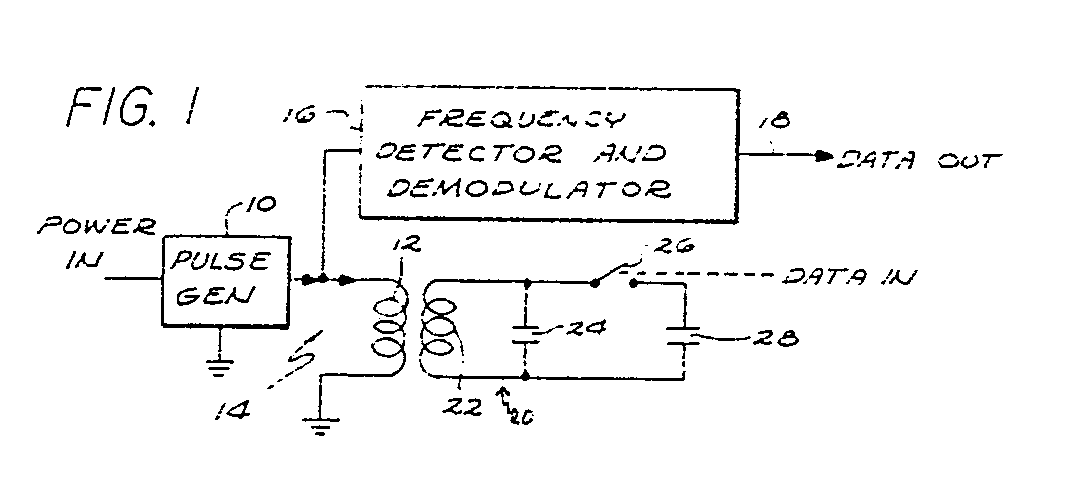(57) A reader identifies information, such as the identity of an object at a transponder,
provided in binary form by the transponder. The reader initially generates a pulse
which activates the transponder into transmitting a series of signals, such as by
magnetic induction, to the reader. Upon each count of a particular number of signals
in the reader, the reader generates an additional pulse which causes the transponder
to transmit a new series of signals to the reader. The generation of the pulses by
the reader may occur through the charge and discharge of energy in a storage member
such as a capacitance. The series of signals produced by the transponder may have
either a first frequency or a second frequency. The signals may be generated in each
sequence at the first and second frequencies in an order dependent upon (a) the binary
code identifying the object at the transponder and (b) the polarity of the pulse produced
by the transponder in such sequence. The signals may be generated at the second frequency
by connecting a capacitance across a coupling coil at the transponder. The reader
then identifies the information by demodulating the signals received by it at the
first and second frequencies. The reader is able to interrupt at any time the generation
of the sequences of signals at the transponder when it does not receive the signals
transmitted by the transponder. The reader then operates on a free running basis to
generate pulses of opposite polarity at a relatively low frequency. In this way, the
reader is constantly prepared to activate the transponder when the transponder becomes
subsequently disposed within the effective range of the reader.
|

|
